|
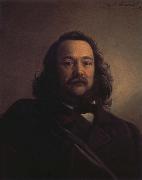 |
Johann Peter Hasenclever
|
|
1810 Remscheid-1853 Dusseldorf, German painter. His artistic talent was recognized in 1827, while he was at school in D?sseldorf. The same year he embarked on a course in architecture at the Akademie in D?sseldorf. In 1828 he turned to the study of history painting. After a difference of opinion over the theory of art with the Director of the Akademie, Wilhelm von Schadow, Hasenclever went home to Remscheid. There he taught himself portrait painting. An example of his work from this period is the portrait of Gertraude Scharff (1832-3; Remscheid, Dt. Werkzeugmus. & Heimatmus.). From 1832 to 1838 Hasenclever again studied at the Akademie in D?sseldorf in a painting class taught by Ferdinand Theodor Hildebrandt (1804-74). In portraits and humorous genre paintings Hasenclever found a field suited to his gifts. Pithy commentaries on the everyday life of the lower middle classes are present in all of Hasenclever's work. He was best known for subjects such as wine-tastings and cellar scenes, and he also made a series of Jobs pictures, humorous, ironic interpretations of popular life based on the poem 'Jobsiade', a grotesque and comic heroic epic written by Carl Arnold Kortum in 1784. |
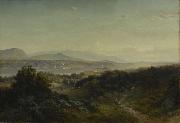 |
Johann Hermann Carmiencke
|
|
Johann Hermann Carmiencke, a landscape painter and etcher, was born at Hamburg in 1810. He went to Dresden in 1831 as a journeyman painter, and while there studied in Dahl's school. Thence he went to Copenhagen in 1834, where he studied in the Academy, and presently repairing to Leipsic, received instruction there from Sohonberg. Returning to Copenhagen in 1838, he proceeded to travel as an artist in Sweden, Bavaria, and the Tyrol, visiting Italy from 1845 to 1846. He was then appointed court painter to Christian VIII, for whom he executed many works. In consequence of the war, he went in 1851 to New York, where he was well received, and admitted into the Academy of Brooklyn. His works were mainly groups of mountain ranges, which were very effectively rendered, and possessed an excellent tone the execution being simple and true to nature. The 'Mountain Tarn' and the 'View on the Zillerthal' may be particularly noticed. There are thirty-five careful etchings of landscapes by him, some of which were published by the Art Association of Copenhagen in 1850 and 1851. He died at New York in 1867. |
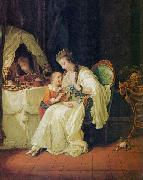 |
Johann Heinrich Wilhelm Tischbein
|
|
Johann Heinrich Wilhelm Tischbein, also known as Goethe-Tischbein (15 February 1751 - 26 February 1828) was a German painter. He was a descendant of the Tischbein family of painters, and a pupil of his uncle Johann Jacob Tischbein.
|
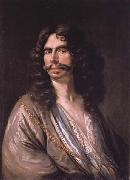 |
Johann Heinrich Roos
|
|
German Baroque Era Painter, 1631-1685
was a German Baroque era painter and etcher. His works are presented in various art museums worldwide. |
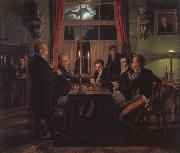 |
Johann Erdmann Hummel
|
|
1769 Kassel-1852 Berlin,German painter and writer. He studied from 1782 in the architecture class at the Akademie der Bildenden K?nste at Kassel and subsequently under the Kassel court painter, Wilhelm B?ttner. Hummel retained his connection with architecture, however, and this is manifested in his overpowering concern with structure and perspective. The Kassel court granted Hummel funds for travel and study in Italy and, in 1792, he went to Rome, where he joined a group of fellow Germans, including the painters Johann Christian Reinhart, Johann Martin von Rohden, Friedrich Bury and the architect Friedrich Weinbrenner. In 1796 Joseph Anton Koch joined the group. Hummel also attended the philosophical lectures given by Carl Ludwig Fernow (1763-1808) and became a friend of the archaeologist Aloys Hirt. In Rome, |
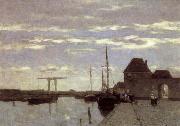 |
Johan Hendrik Weissenbruch
|
|
Dutch Painter, 1824-1903
Painter, cousin of Jan Weissenbruch. He referred to himself and signed his work as Jan Hendrik Weissenbruch. From 1840 he attended drawing lessons with the Norwegian painter Johannes Lew, and from 1846 he was taught by Bartholomeus J. van Hove at the Koninklijke Academie van Beeldende Kunsten in The Hague. His early paintings clearly show the influence of van Hove and Andreas Schelfhout, although it is uncertain whether he was actually taught by the latter. His father, an avid collector, owned works by both artists. |
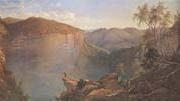 |
JH Carse
|
|
Australian Painter, ca.1819-1900 |
 |
Jenny Hoppe
|
|
Jenny Hoppe (Dusseldorf, 1870 -Elsene, 1934) was een Duits-Belgische kunstschilderes.
|
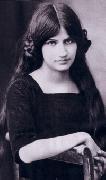 |
Jeanne Hebuterne
|
|
(April 6, 1898 C January 25, 1920) was a French artist, best known as the frequent subject and common-law wife of the artist Amedeo Modigliani.
Born in Paris to a Roman Catholic family, her father, Achille Casimir Hebuterne, worked at Le Bon Marche department store. |
 |
Jean-Louis Hamon
|
|
Plouha 1821 - Saint - Raphael, 1874.
French Academic Painter, 1821-1874.
Studied under Charles Gleyre.
French Academic Painter, 1821-1874. Studied under Charles Gleyre. French painter and designer. He was encouraged to practise drawing by the Brothers of the Christian Doctrine at Lannion. Through the intervention of Felicite-Robert de Lamennais (1782-1854), he was made drawing-master at a religious seminary at Ploermel, Brittany, although at this stage he had received no instruction and had never seen an oil painting. In 1840 he asked his conseil general for help and left for Paris the following year with a grant of 500 francs. He went to Delaroche's studio, where he made friends with Picou, Jean-Leon Gereme, Jean Aubert (1824-1906) and Jean Eugene Damery (1823-53). Charles Gleyre, who took over Delaroche's studio in 1843, encouraged and protected him during years of poverty. |
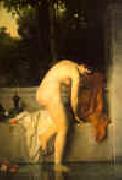 |
Jean-Jacques Henner
|
|
1829-1905
French
Jean Jacques Henner Galleries
French painter. He was born into a peasant family in the Sundgau and received his first artistic training at Altkirch with Charles Goutzwiller (1810-1900) and later in Strasbourg in the studio of Gabriel-Christophe Gu?rin (1790-1846). In 1846 he enrolled at the Ecole des Beaux-Arts in Paris as a pupil of Michel-Martin Drolling and, from 1851, of Francois-Edouard Picot. While a student he was particularly drawn to portraiture, and during his frequent visits to Alsace he made portraits of his family as well as of the notables of the region. He also painted scenes of Alsatian peasant life. |
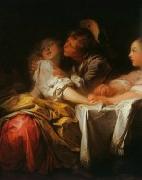 |
Jean-Honore Fragonard
|
|
French Rococo Era Painter, 1732-1806
was a French painter and printmaker whose late Rococo manner was distinguished by remarkable facility, exuberance, and hedonism. One of the most prolific artists active in the last decades of the Ancien Regime, Fragonard produced more than 550 paintings , of which only five are dated. Among his most popular works are genre paintings conveying an atmosphere of intimacy and veiled eroticism. He was born at Grasse, Alpes-Maritimes, the son of François Fragonard, a glover, and Françoise Petit. He was articled to a Paris notary when his father's circumstances became strained through unsuccessful speculations, but showed such talent and inclination for art that he was taken at the age of eighteen to François Boucher, who, recognizing the youth's rare gifts but disinclined to waste his time with one so inexperienced, sent him to Chardin's atelier. Fragonard studied for six months under the great luminist, then returned more fully equipped to Boucher, whose style he soon acquired so completely that the master entrusted him with the execution of replicas of his paintings. Though not yet a pupil of the Academy, Fragonard gained the Prix de Rome in 1752 with a painting of "Jeroboam Sacrificing to the Golden Calf", but before proceeding to Rome he continued to study for three years under Charles-Andre van Loo. In the year preceding his departure he painted the "Christ washing the Feet of the Apostles" now at Grasse cathedral. On September 17, 1756, he took up his abode at the French Academy in Rome, then presided over by Charles-Joseph Natoire. While at Rome, Fragonard contracted a friendship with a fellow painter, Hubert Robert. In 1760, they toured Italy together, executing numerous sketches of local scenery. It was in these romantic gardens, with their fountains, grottos, temples and terraces, that Fragonard conceived the dreams which he was subsequently to render in his art. He also learned to admire the masters of the Dutch and Flemish schools (Rubens, Hals, Rembrandt, Ruisdael), imitating their loose and vigorous brushstrokes. Added to this influence was the deep impression made upon his mind by the florid sumptuousness of Giovanni Battista Tiepolo, whose works he had an opportunity to study in Venice before he returned to Paris in 1761. In 1765 his "Coresus et Callirhoe" secured his admission to the Academy. It was made the subject of a pompous (though not wholly serious) eulogy by Diderot, and was bought by the king, who had it reproduced at the Gobelins factory. Hitherto Fragonard had hesitated between religious, classic and other subjects; but now the demand of the wealthy art patrons of Louis XV's pleasure-loving and licentious court turned him definitely towards those scenes of love and voluptuousness with which his name will ever be associated, and which are only made acceptable by the tender beauty of his color and the virtuosity of his facile brushwork; |
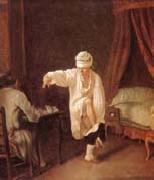 |
jean Huber
|
|
Swiss Painter (b. 1721, Geneve, d. 1786, Bellevue) ,
Geneva1721-1786
Geneva1721-1786,Silhouettist, painter, draughtsman and printmaker. His paternal ancestors were patrician Genevese merchant bankers. As a young man he soldiered at Kassel in Germany and in Italy, where he fought for Savoy in the War of the Austrian Succession (1740-48). In 1752 he was elected to Geneva's Council of Two Hundred and served his native city as a magistrate. He had no formal artistic training, but from his youth he clipped out of paper or cards freehand profiles of a kind that later came to be called silhouettes. |
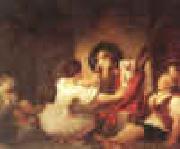 |
Jean Honore Fragonard
|
|
1732-1806
French
Jean Honore Fragonard Locations
French painter. He studied with François Boucher in Paris c. 1749. He subsequently won a Prix de Rome, and while in Italy (1756 ?C 61) he traveled extensively and executed many sketches of the countryside, especially the gardens at the Villa d Este at Tivoli, and developed a great admiration for the work of Giovanni Battista Tiepolo. In 1765 his large historical painting Coresus Sacrifices Himself to Save Callirhoë was purchased for Louis XV and won Fragonard election to the French Royal Academy. He soon abandoned this style to concentrate on landscapes in the manner of Jacob van Ruisdael, portraits, and the decorative, erotic outdoor party scenes for which he became famous (e.g., The Swing, c. 1766). The gentle hedonism of such party scenes epitomized the Rococo style. Although the greater part of his active life was passed during the Neoclassical period, he continued to paint in a Rococo idiom until shortly before the French Revolution, when he lost his patrons and livelihood.
|
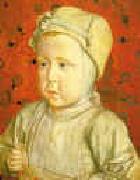 |
Jean Hey
|
|
Flemish Northern Renaissance Painter, active 1480-1500
Until the late 20th century, the name of the painter of the Moulins Triptych was unknown, although art historians identified a number of other works that were evidently by the same hand. The first monograph on the Master of Moulins, written in 1961 by Madeleine Huillet d'Istria, argued that this artist did not actually exist, and that more than 12 different artists were responsible for the corpus of works traditionally ascribed to him. The Master's identity was established after an inscription was found on the reverse of a damaged painting, Christ with Crown of Thorns (1494) in the Royal Museums of Fine Arts of Belgium, Brussels, identifying the artist as Jean Hey, teutonicus and pictor egregius ("the famous painter"), and identifying the patron as Jean Cueillette, who was secretary to the King and an associate of the Bourbon family.Stylistic similarities link this painting to the works attributed to the Master of Moulins. The Master of Moulins appears to have been the court painter for the Bourbons, and from a surviving account for 1502-03, it is clear that the court painter's name was Jean; other candidates once considered plausible, such as Jean Perreal and Jean Prevost, have proven untenable in the light of subsequent research. The term "Teutonicus", or "German" included Flemings at this date. |
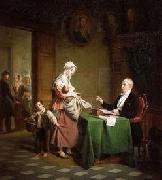 |
Jean Henri De Coene
|
|
Jean Henri De Coene, a Belgian painter of genre and historical subjects, was born at Nederbrakel in 1798. |
 |
Jean Baptiste Huet
|
|
(Paris, 15 October 1745-Paris, 27 January 1811) was a French painter, engraver and designer associated with pastoral and genre scenes of animals in the Rococo manner, influenced by François Boucher.
Born into a family of artistse his uncle was Christophe Huet, his father Nicolas Huetehe apprenticed with the animal painter Charles Dagomer, a member of the painters' guild, the Academie de Saint-Luc, Paris, who was working in the 1760s. Huet's interest in printmaking and his acquaintance with Gilles Demarteau, who later engraved many of his compositions, both date from this period. About 1764 Huet entered the studio of Jean-Baptiste Le Prince, where he further developed his printmaking skills, largely reproducing his own paintings, a method of publishing them with some profit.
In 1768 he was approved by the Academie Royale, and 29 July 1769 he was received (reçu) in the minor category (petite maniere) of painter of animals and was well received in the public reviews when he began to exhibit at the Paris Salon that same year, with a Dog Attacking Geese, now at the Louvre. He continued to exhibit annually until 1789, through his attempts at the grand manner of history painting, considered the noblest genre, were not met with approval. |
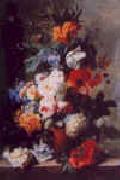 |
Jan van Huysum
|
|
1682-1749
Dutch
Jan Van Huysum Galleries
He was the brother of Jacob van Huysum, and the son of Justus van Huysum, who is said to have been expeditious in decorating doorways, screens and vases. A picture by Justus is preserved in the gallery of Brunswick, representing "Orpheus and the Beasts in a wooded landscape", and here we have some explanation of his son's fondness for landscapes of a conventional and Arcadian kind; for Jan van Huysum, though skilled as a painter of still life, believed himself to possess the genius of a landscape painter.
Half his pictures in public galleries are landscapes, views of imaginary lakes and harbours with impossible ruins and classic edifices, and woods of tall and motionless trees-the whole very glossy and smooth, and entirely lifeless. The earliest dated work of this kind is that of 1717, in the Louvre, a grove with maidens culling flowers near a tomb, ruins of a portico, and a distant palace on the shores of a lake bounded by mountains.
Some of the finest of van Huysum's fruit and flower pieces have been in English private collections: those of 1723 in the earl of Ellesmere's gallery, others of 1730-1732 in the collections of Hope and Ashburton. One of the best examples is now in the National Gallery, London (1736-1737). No public museum has finer and more numerous specimens than the Louvre, which boasts of four landscapes and six panels with still life; then come Berlin and Amsterdam with four fruit and flower pieces; then St Petersburg, Munich, Hanover, Dresden, the Hague, Brunswick, Vienna, Carlsruhe, Boston and Copenhagen. |
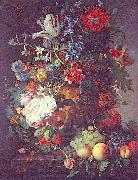 |
Jan van Huijsum
|
|
also spelled Huijsum, (April 15, 1682, Amsterdam - February 8, 1749, Amsterdam) was a Dutch painter.
He was the brother of Jacob van Huysum, the son of the flower painter Justus van Huysum, and the grandson of Jan van Huysum I, who is said to have been expeditious in decorating doorways, screens and vases. A picture by Justus is preserved in the gallery of Brunswick, representing "Orpheus and the Beasts in a wooded landscape", and here we have some explanation of his son's fondness for landscapes of a conventional and Arcadian kind; for Jan van Huysum, though skilled as a painter of still life, believed himself to possess the genius of a landscape painter.
Half his pictures in public galleries are landscapes, views of imaginary lakes and harbours with impossible ruins and classic edifices, and woods of tall and motionless trees-the whole very glossy and smooth, and entirely lifeless. The earliest dated work of this kind is that of 1717, in the Louvre, a grove with maidens culling flowers near a tomb, ruins of a portico, and a distant palace on the shores of a lake bounded by mountains.
Some of the finest of van Huysum's fruit and flower pieces have been in English private collections: those of 1723 in the earl of Ellesmere's gallery, others of 1730-1732 in the collections of Hope and Ashburton. One of the best examples is now in the National Gallery, London (1736-1737). No public museum has finer and more numerous specimens than the Louvre, which boasts of four landscapes and six panels with still life; then come Berlin and Amsterdam with four fruit and flower pieces; then St Petersburg, Munich, Hanover, Dresden, the Hague, Brunswick, Vienna, Carlsruhe, Boston and Copenhagen. |
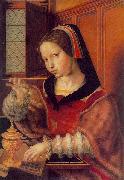 |
Jan van Hemessen
|
|
(c. 1500 - c. 1566) was a Flemish Northern Renaissance painter. He was born in Hemiksem, then called Hemessen or Heymissen. Following studies in Italy, in 1524 he settled in Antwerp. A mannerist, his images focused on human failings such as greed and vanity. Like his daughter, Catarina van Hemessen,he specialised in painted portraits.
Jan Sanders van Hemessen was a Flemish Northern Renaissance painter who was part of the mannerist movement. He was born in Hemessen in the Netherlands but settled in Antwerp in 1524 after studying in Italy. Hemessen specialized in scenes of human character flaws such as vanity and greed.
His pictures are often religious, while his style helped found the Flemish traditions of genre painting. Hemessen was also a portrait painter, which influenced his daughter to become a Flemish Northern Renaissance painter as well. The Surgeon of 1555 is an oil painting by Jan Sanders Van Hemessen currently in the Museo del Prado in Madrid, Spain. The scene likely represents a stonecutter at a fair. The surgeon, who is clearly happy that his operations have been successful, painstakingly moves his knife towards the stone, which is already visible. Behind him hang stones which have been successfully cut out of the head of other patients as a sign of his skill. Next to the quack stands a man who is wringing his hands in desperation, clearly going to be the next patient under the scalpel. |
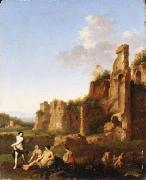 |
Jan van Haensbergen
|
|
(1642-1705) was a Dutch Golden Age painter.
He was registered in the Utrecht Guild of St. Luke in 1668 and in 1669 he was registered in the Confrerie Pictura in The Hague, where he worked until he died.According to Houbraken he was a student of Cornelius van Poelenburgh, and though he was quite successful in imitating his master's style, he switched to portraits since he could make a comfortable living that way.Though he is considered by some to have been born in Utrecht, he signed his name 'Joh. Haensbergh Gorco fecit', which leads historians to conclude he was from Gorinchem. His portraits show the influence of Caspar Netscher. |
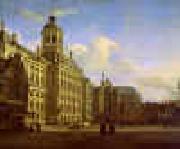 |
Jan van der Heyden
|
|
1637-1712
Dutch
Jan Van Der Heyden Gallery
Van der Heyden grew up in Gorcum, but the family moved to Amsterdam around 1650. They lived on Dam Square. As a young guy he witnessed the fire in the old townhall which made a deep impression on him. He later would describe or draw 80 fires in almost any neighborhood of Amsterdam. When he married in 1661 the family was living on Herengracht, the most fashionable canal in Amsterdam. In 1668 Cosimo II de' Medici bought one of his paintings, a view of the townhall with a manipulated perspective. Van der Heyden often painted country estates, like Goudestein, owned by Joan Huydecoper II. He was not good in drawing figures and used for his paintings a metal plate for bricks, a sponge or moss for the leaves. Johannes Lingelbach, Adriaen van de Velde und Eglon van der Neer assisted him drawing the figures. Jan van der Heyden also introduced the lamp post and in 1672 impoved the design of the fire engine. He died in wealth as the superintendent of the lighting and director of the (voluntary) firemen's guild at Amsterdam.
Van der Heyden was a contemporary of the landscape painters Hobbema and Jacob van Ruisdael, with the advantage, which they lacked, of a certain professional versatility; for, whilst they painted admirable pictures and starved, he varied the practice of art with the study of mechanics. Until 1672 he painted in partnership with Adriaen van de Velde. After Adrian's death, and probably because of the loss which that event entailed upon him, he accepted the offices to which allusion has just been made. At no period of artistic activity had the system of division of labour been more fully or more constantly applied to art than it was in Holland towards the close of the 17th century.
Van der Heyden, who was perfect as an architectural draughtsman insofar as he painted the outside of buildings and thoroughly mastered linear perspective, seldom turned his hand to the delineation of anything but brick houses and churches in streets and squares, or rows along canals, or "moated granges," common in his native country.
He was a travelled man, had seen The Hague, Ghent and Brussels, and had ascended the Rhine past Xanten to Cologne, where he copied over and over again the tower and crane of the great cathedral. But he cared nothing for hill or vale, or stream or wood. He could reproduce the rows of bricks in a square of Dutch houses sparkling in the sun, or stunted trees and lines of dwellings varied by steeples, all in light or thrown into passing shadow by moving cloud.
He had the art of painting microscopically without loss of breadth or keeping. But he could draw neither man nor beast, nor ships nor carts; and this was his disadvantage. His good genius under these circumstances was Adrian van der Velde, who enlivened his compositions with spirited figures; and the joint labour of both is a delicate, minute, transparent work, radiant with glow and atmosphere. |
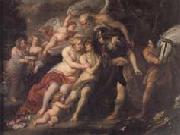 |
Jan Van Den Hoecke
|
|
Flemish Baroque Era Painter, 1611-1651
was a Flemish Baroque painter and draughtsman. He was born and died in Antwerp. He first apprenticed with his father, the painter Gaspar van den Hoecke (1595?C1648); then worked in the studio of Peter Paul Rubens. Jan's brother Robert van den Hoecke (1622?C1668) was also a painter. The artist and his father were well known for their 1635 execution of decorations for the Arch dedicated to the Emperor Ferdinand III in Antwerp. In this collaboration, Jan painted monumental representations, as seen in his piece, Triumphal Entrance of Cardinal Prince Ferdinand of Spain, (Uffizi Gallery). Hoecke then traveled to Austria under the commission of the Emperor Ferdinand III after 1637, staying for about ten years. He also painted for Ferdinand's brother, Archduke Leopold Wilhelm of Austria (1614-C1662), including a Madonna and Child and a number of allegorical pieces. Before this he traveled to Italy and worked in Rome, which may have influenced his style some. Another piece by Hoecke is his, Hercules between Vice and Virtue, (Uffizi Gallery), which shows an influence from both Rubens, and another pupil of the master Baroque painter, Anthony van Dyck. |
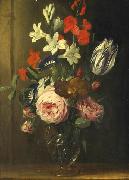 |
Jan van den Hecke
|
|
(1620-1684) was a Flemish Baroque painter.
According to Houbraken he painted landscapes, which he populated with animals and other figures himself. He also made flower and fruit still lifes and could paint gold, silver, crystal, and porcelain quite well. He spent a long period travelling and working in Italy, which is noticeable in his landscapes.
According to the RKD he was registered in the Antwerp Guild of Saint Luke as an apprentice in 1636 and learned to paint from Abraham Hack, who also taught his contemporary, the flower painter Hieronymus Galle. In 1641 Van den Hecke was registered as a master of the guild. From 1653-1658 he was in Italy, but somewhere in the mid-50's he went back and forth to Belgium, since he is also registered in Brussels during that period. He died the same year as his wife Maria Adriana Heijens; when they died they left three children; Jan (II), aged 24, Maria, aged 21, and Peeter, aged 20. Van den Hecke's pupil Peeter de Clerc eventually became a master painter in the guild. Van den Hecke's son Jan van den Hecke II became a popular flower painter. |
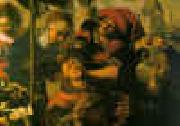 |
Jan Sanders van Hemessen
|
|
1500-1566
Dutch
Jan Sanders Van Hemessen Gallery
was a Flemish Northern Renaissance painter. He was born in Hemiksem, then called Hemessen or Heymissen. Following studies in Italy, in 1524 he settled in Antwerp. A mannerist, his images focused on human failings such as greed and vanity. Like his daughter, Catarina van Hemessen, he also painted portraits. |
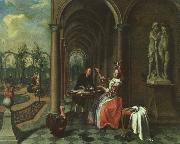 |
Jan Josef Horemans the Elder
|
|
1682-1759
Dutch
Jan Josef Horemans Galleries
He was a pupil of the sculptor Michiel van der Voort I and then of the Dutch painter Jan van Pee (before 1640-1710), who was active in Antwerp. Horemans joined the Guild of St Luke in 1706-7. He appears to have followed in the footsteps of the 17th-century Flemish genre painters, executing a few portraits and a large number of small anecdotal pictures that were highly prized on the market. In paintings such as the Village School and the Cobbler's Shop (both 1712; Vienna, Ksthist. Mus.), the Musical Company (1715; Brunswick, Herzog Anton Ulrich-Mus.) and the Card-players (Florence, Uffizi) he represented scenes from contemporary everyday life that combine observation with a certain degree of stiffness. Most of his paintings are signed. In 1746, together with his son Jan Josef Horemans II, he painted the Abbot of St Michel Visiting the Order of the Fencing Oath (Antwerp, Kon. Mus. S. Kst.). |
 |
Jan Hackaert
|
|
(1628-1685) was a Dutch Golden Age painter.
He travelled in Germany and Switzerland, and painted and sketched mostly landscapes.He would sketch miners at work in the mountains, and on more than one occasion this caused him trouble because the workers couldn't understand what he was doing. They felt he was either a spy or hexing them and made a complaint. Because Italianate landscapes were so fashionable, his Lake Zurich was mistaken for an Italian lake for years.
He painted the landscape backgrounds for other painters, such as Nicolas Berchem and Adriaen van de Velde.
|
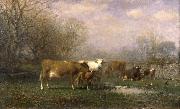 |
James McDougal Hart
|
|
(May 10, 1828 - October 24, 1901), was a Scottish-born American landscape and cattle painter of the Hudson River School. His older brother, William Hart, was also a Hudson River School artist, and the two painted similar subjects.
Hart was born in Kilmarnock, Scotland, and was taken to America with his family in early youth. In Albany, New York he trained with a sign and carriage maker possibly the same employer that had taken on his brother in his early career. Unlike his brother, however, James returned to Europe for serious artistic training. He studied in Munich, and was a pupil of Friedrich Wilhelm Schirmer in Dusseldorf.
Hart returned to America in 1853. He exhibited his first work at the National Academy of Design in 1848, became an associate in 1857 and a full member in 1859. James Hart was particularly devoted to the National Academy, exhibiting there over a period of more than forty years, and serving as vice president late in his life from 1895 to 1899. Like his brother, James also exhibited at the Brooklyn Art Association (he lived for a time in Brooklyn) and at major exhibitions around the country.
Along with most of the major landscape artists of the time, Hart based his operations in New York City and adopted the style of the Hudson River School. While James Hart and his brother William often painted similar landscape subjects, James may have been more inclined to paint exceptionally large works. An example is The Old Homestead (1862), 42 x 68 inches, in the collection of the High Museum of Art in Atlanta, Georgia. James may have been exposed to large paintings while studying in D??sseldorf, a center of realist art pedagogy that also shaped the practices of Albert Bierstadt and Worthington Whittredge. William Hart, who did not seek academic European training, seems to have been more comfortable painting small and mid-sized works.
Like his brother William, James excelled at painting cattle. Kevin J. Avery writes, "the bovine subjects that once distinguished [his works] now seem the embodiment of Hart's artistic complacency." In contrast with the complacency of some of his cattle scenes, his major landscape paintings are considered important works of the Hudson River School. |
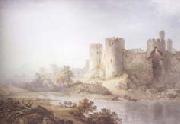 |
James Holworthy
|
|
(d. 1841)
was a British watercolour artist. Some of Holworthy's art can be seen in the Tate Gallery. Holworthy exhibited at the Royal Academy in 1803 and 1804. In the latter year he was one of the foundation members of the Society of Painters in Water-colours, now known as the Royal Watercolour Society,and he contributed constantly to their exhibitions till 1813. His subjects being drawn from Wales, the Lake district, and Yorkshire. He practised in London till 1822. In 1900, there were two drawings by him at the South Kensington Museum. In 1821, Holworthy was living in Barton in the Beans, Leicestershire. In either 1821[2] or 1824 he married Anne Wright,[3] a niece of John Wright in Derby, and retired to the Brookfield estate, near Hathersage in Derbyshire, which he had purchased. He died in London in 1841 |
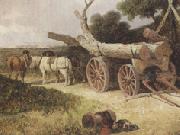 |
James holland,r.w.s
|
|
1799-1870
English painter. As a boy he was employed for seven years to paint flowers on pottery in the factory of John Davenport ( fl 1793; d 1848) of Longport. In 1819 Holland moved to London, where he continued at first to work as a pottery painter but also undertook watercolours of flowers and natural history subjects, exhibiting his works at the Royal Academy from 1824. After 1828 oil paintings predominated over watercolours in the many pictures that he exhibited at the Royal Academy, the Society of Painters in Water-Colours (of which he was made an associate in 1835), the British Institution and the Society of British Artists. He travelled to Paris in 1831 and subsequently made repeated tours of the Continent. Buildings in European cities now became his favourite subject, and above all, scenes of Venice, which he first visited in 1835; his Venetian views have sometimes been confused with those by Richard Parkes Bonington. In 1837 he was commissioned by the Landscape Annual to make drawings in Portugal, which were engraved in the issue for 1839. He travelled again to Venice in 1845, 1851 and 1857, making sketches en route of the Low Countries, France, Switzerland and Austria. |
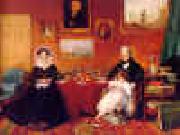 |
James Holland
|
|
1799-1870
British
English painter. As a boy he was employed for seven years to paint flowers on pottery in the factory of John Davenport ( fl 1793; d 1848) of Longport. In 1819 Holland moved to London, where he continued at first to work as a pottery painter but also undertook watercolours of flowers and natural history subjects, exhibiting his works at the Royal Academy from 1824. After 1828 oil paintings predominated over watercolours in the many pictures that he exhibited at the Royal Academy, the Society of Painters in Water-Colours (of which he was made an associate in 1835), the British Institution and the Society of British Artists. He travelled to Paris in 1831 and subsequently made repeated tours of the Continent. Buildings in European cities now became his favourite subject, and above all, scenes of Venice, which he first visited in 1835; his Venetian views have sometimes been confused with those by Richard Parkes Bonington. In 1837 he was commissioned by the Landscape Annual to make drawings in Portugal, which were engraved in the issue for 1839. He travelled again to Venice in 1845, 1851 and 1857, making sketches en route of the Low Countries, France, Switzerland and Austria. Other subjects favoured by Holland were Blackheath and Greenwich (both London), where he lived from 1830 to 1845. He was renowned for his fluent draughtsmanship and for his brilliant colouring in both oils and watercolours, making liberal use of gouache in the latter. The contents of his studio were auctioned at Christie's, London, on 26 May 1870. |
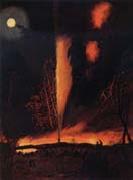 |
James Hamilton
|
|
Irish-born American Painter, 1819-1878, American painter of Irish birth. He emigrated to the USA and at the age of 15 arrived in Philadelphia, where he was encouraged to study art by the engraver John Sartain (1808-97). Hamilton had drawing lessons with local teachers and studied from English artists' manuals including that on oil painting by Samuel Prout; he was also influenced by the English watercolour technique of broad transparent washes. With these stylistic interests and his innate sensitivity to nature, |
|

